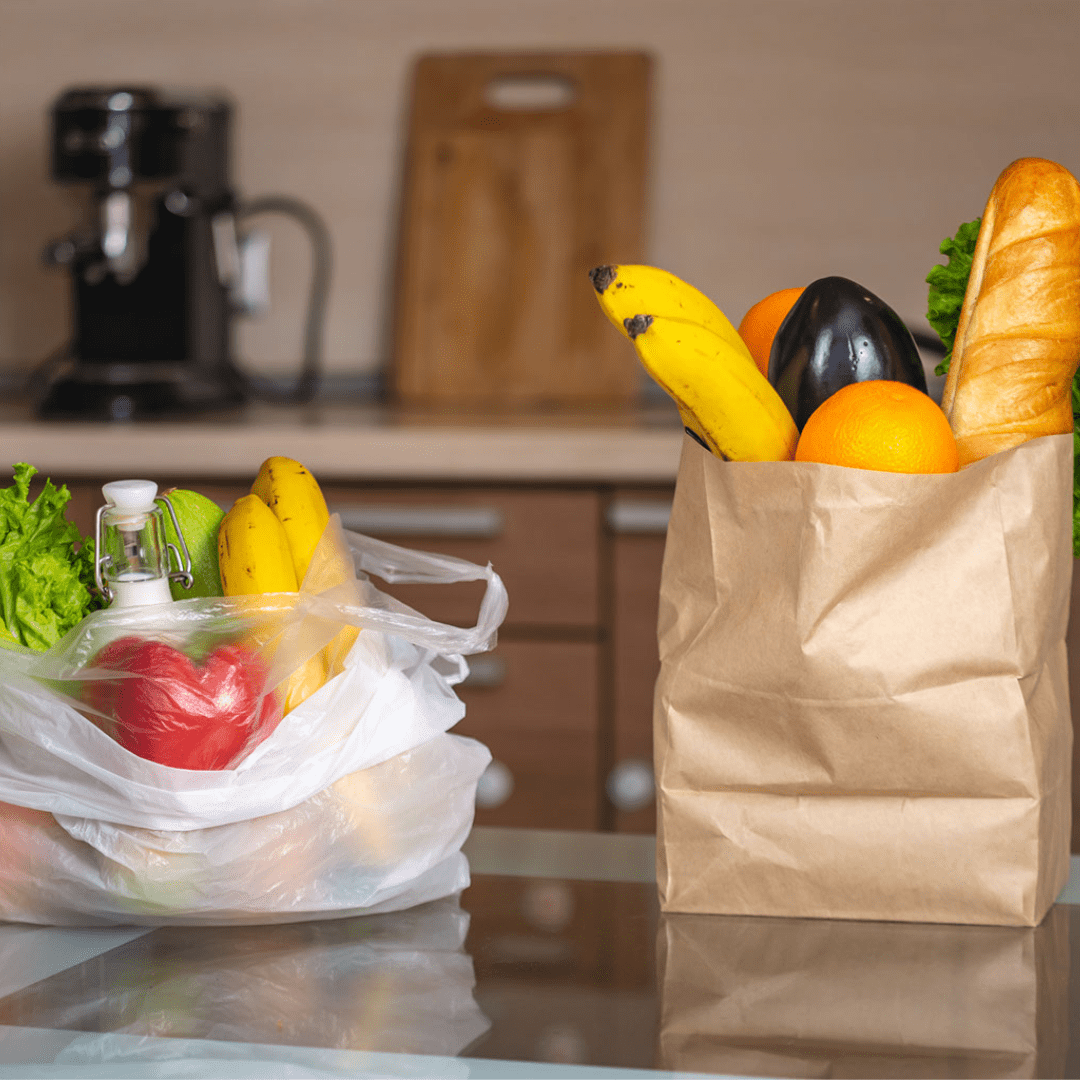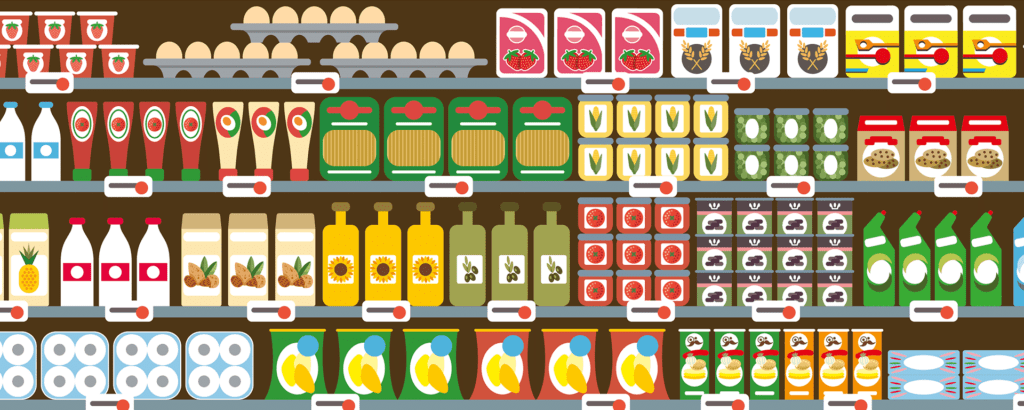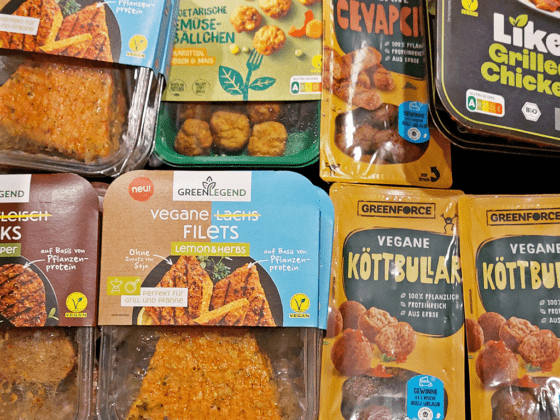Sustainability duel in the supermarket
Glass, cardboard, cans or bio-plastic – what constitutes sustainable packaging? Many customers have already lost the overview and thrown in the towel. We explain which packaging is really sustainable, how to unmask cheating packaging – and what creative ideas manufacturers have for implementing the packaging trends of the future.
Gummi bears are already available in deposit jars, pasta in paper bags, and many yogurt fans have long since learned to take off their cups naked after use and remove the cardboard coating. Retailers and industry are bringing ever more modern, sustainable packaging solutions to the market. But which material is actually the most environmentally friendly?
It is usually impossible to clearly define how sustainable packaging really is. The only basic rule is that packaging must conserve resources – in the use of materials and in the use of energy. Above all, however, it must be fit for purpose and protect the actual product. Because according to one study, the ecological footprint of the product is 16 to 30 times higher than that of the packaging! If the super-sustainable packaging causes the product or parts of it to become unusable, it will all be for nothing.
The ecological footprint of packaging is made up of four main criteria:
- Production: This includes, for example, raw materials, packaging design and the manufacture of the packaging.
- Transport: This includes raw material deliveries to the factory, from the factory to the warehouse, and from the warehouse to the store or end customer.
- Useful life: Some packaging can be reused, some recycled, and some is waste after a single use.
- Recycling or disposal: Here, the cost and energy required to process packaging waste are considered.
Packaged or unpackaged?
The beginning is simple. Of course, the “unpackaged” team is the clear winner here. Fruit (apples, pears), vegetables (fennel, peppers) and nuts can often be bought individually. It also counts as “unpackaged” if you use a vegetable net or take the plastic bag from your last shopping trip and use it again.
Tip 1: Take a container with you when you go shopping at the meat counter and try out the new unpackaged stations in supermarkets.
Tip 2: Rather use fresh products instead of canned, for example with pizza tomatoes or fruit juice. This also saves packaging.
Paper bag or plastic bag?
Surprising but true: when it comes to disposable packaging for fruit and vegetables and disposable carrier bags, a plastic bag is more sustainable than a paper bag. The reason: the plastic version has a significantly lower weight than the paper model. Eight small plastic bags weigh as much as one paper bag. The environmental impact of the paper bag is therefore 1.5 times higher than that of the plastic bag.
Tip: It is best to use bags several times.
Can or screw jar?
When it comes to canned goods, neither system is exactly sustainable. Although disposable jars with screw lids have a good image, their environmental performance is even worse than that of tinplate cans! Reasons: the enormous energy requirements for production and recycling, as well as the high pollutant emissions during transport due to the high weight.

Tip: Avoid such cans as far as possible. Canned goods in tubular bags have by far the best eco-balance.
Disposable glass or plastic cup?
At the dairy product counter, the choice of packaging materials is particularly wide. Surprisingly, in terms of sustainability, disposable glass is an absolute disaster and the loser when comparing materials. Reusable jars, preferably from regional suppliers, and plastic cups with cardboard coating are the most environmentally friendly for yogurt, cream & co. Caution: with deposit glasses from supraregional suppliers, the eco-balance is no better than that of a normal plastic cup.
Tip: Don’t forget to always “disassemble” cups (plastic cup, lid, cardboard coating) before throwing them away and dispose of them separately.

Bottle or can?
Cans are super lightweight, but they look really old in terms of sustainability and lose out to all other materials. The reasons: A lot of energy is needed for production. In addition, there are only a few filling plants in Germany, so the cans have to travel long distances.
The raw materials come from South America, Asia or Australia – where mining leads to the clearing of rainforests, toxic sludge and polluted soils. Tip: Avoid cans altogether if possible.
Tip: If you have bought cans, be sure to recycle them. They belong in the deposit machine or in the yellow garbage can.
Cardboard tray or plastic tray?
For fruits and vegetables, paper or cardboard trays are much better than the plastic trays that are often used. One of the reasons: PET trays, which properly end up in the yellow garbage can, are usually not recycled at all, but incinerated.
Tip 1: If in doubt, it’s better to use the simple cardboard bowls; the molded cast paper bowls are more expensive to produce.
Tip 2: If plastic, then preferably take a tray made of polypropylene (PP). The material feels somewhat thinner than PET and looks slightly milky.
Bioplastic or normal plastic?
Packaging made from normal, recyclable plastics is currently even more sustainable than packaging made from so-called bioplastics. The problem is that there is currently no recycling path for the new bio-materials. They are sorted out in sorting plants and incinerated. Even so-called biobased plastics, for example made from cellulose, do not have a better eco-balance than conventional plastics.
Tip: Please pay attention, bioplastics do not belong in the organic waste garbage can and must not simply be left in nature.
Carton or plastic bag?
Muesli comes in cardboard boxes or bags, as does frozen fish, and pasta is sold in cardboard boxes with a viewing window. The ecological footprint of both materials is controversial even among experts. The reasons: Cardboard is often much heavier than comparable plastic packaging, but is made from renewable raw materials and often coated with plastic. Paper production requires a great deal of water, and plastics even require petroleum.

Researchers examined the complete product life cycle of both materials for frozen foods, ready meals and fast food. In each case, the cardboard box won out among the packaging compared. In other studies, however, plastics are rated more sustainable because they are usually much lighter. The ultimate in both materials, lightweight, recyclable, paper packaging, is the subject of numerous research projects.
Tip 1: If you have a choice, it is best to take goods in a simple, thin paper bag. The most negative effects are caused by packaging in which the plastic bag and cardboard are still combined – as in the case of muesli, for example. Simply unnecessary!
Tip 2: Supermarkets have recently started selling frozen meals in paper bags. Afterwards, the packaging can simply be disposed of in the waste paper – please be sure to follow the disposal tips on the packaging, because not all of these bags can be disposed of in the paper waste.
Tetrapak or bottle?
Although beverage cartons are particularly light, they are made of paper, plastic and aluminum. They are manufactured with a high energy input, and the material mix makes recycling difficult. The life cycle assessment of composite cartons has been controversial among experts for years. The only fact is that because it is a single-use system, it performs worse than reusable systems, especially regional ones. One scientist has calculated: A glass bottle is more environmentally friendly than a beverage carton if it is transported less than 200 kilometers and used at least 15 times.
Tip: When it comes to juice and milk, look specifically for regional offerings in reusable bottles and avoid using a few Tetrapaks.
Disposable bottle or reusable bottle?
Returnable glass bottles can be refilled up to 50 times, their “colleagues” made of PET up to 25 times. So they save a lot of waste. But they have to be more stable than one-way bottles, and they have to be rinsed and transported. Reusable bottles are clear environmental winners, especially for regional suppliers with short transport routes. Incidentally, 70 percent of disposable plastic bottles in Germany are made from virgin material for which crude oil is used.
Tip: In Germany you don’t actually have to buy bottled water on a regular basis: The tap water is of drinking water quality everywhere.
Plastic bottle or glass bottle?
When it comes to reusable bottles, the life cycle assessment of both materials is equivalent. Glass bottles have the advantage of being 100 percent recyclable, but a considerable amount of energy is required to melt down the used glass, and the weight of glass bottles also leads to comparatively high CO2 emissions during transportation.
Conclusion: If you want to protect nature, you can increasingly opt for unpackaged food or the more sustainable packaging solution in each case – and ideally combine several duel winners. Scientists are constantly researching new materials and technologies to make packaging even more sustainable. The goal is to use as little material as possible without compromising functionality. Today, this can already be achieved by using thinner film (“downgauging”) or lightweight cardboard.
 English
English Deutsch
Deutsch




